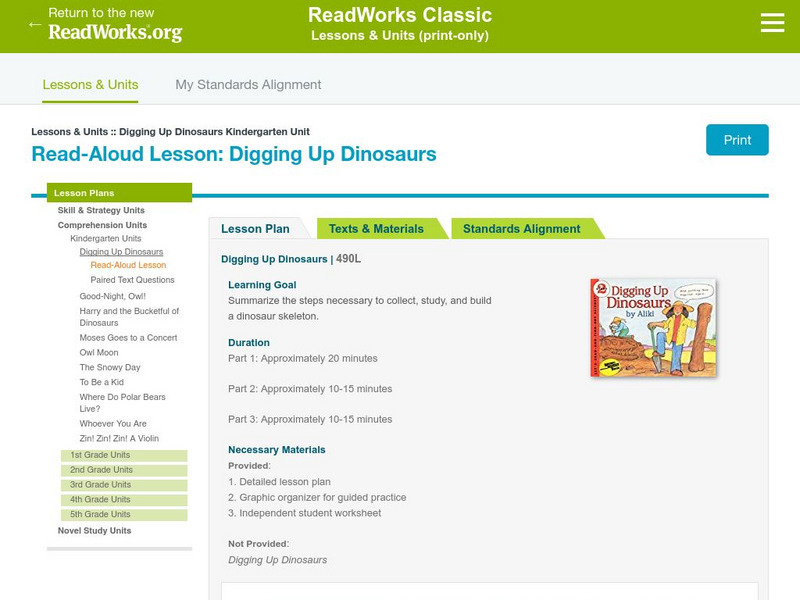Hi, what do you want to do?
Curated OER
Prehistory Prowl
In this North Dakota prehistory activity activity, students study the mastodon, bison, native plants, and native people of North Dakota as they respond to 21 drawing, graphic organizer and matching questions.
Curated OER
Skeletal System Crossword
In this skeletal system worksheet, students complete a crossword about the skeletal system. Students insert 14 words into the crossword. An answer key is provided.
Curated OER
What Is A Fossil?
In this fossils activity, students read 13 clues pertaining to fossils. Students fit their answers in a crossword puzzle. There is no word bank.
Curated OER
Exploring Ecology
Young scholars explore the basics of ecology through numerous hands-on and relevant activities. They participate in an online food chain demonstration, which explores food web dynamics. They dissect owl pellets, examine the prey's...
Read Works
Read Works: Read Aloud Lesson: Digging Up Dinosaurs
[Free Registration/Login Required] Teachers will read "Digging Up Dinosaurs" using the close reading technique. Students will use graphic organizers to summarize the steps necessary to collect, study, and build a dinosaur skeleton.









